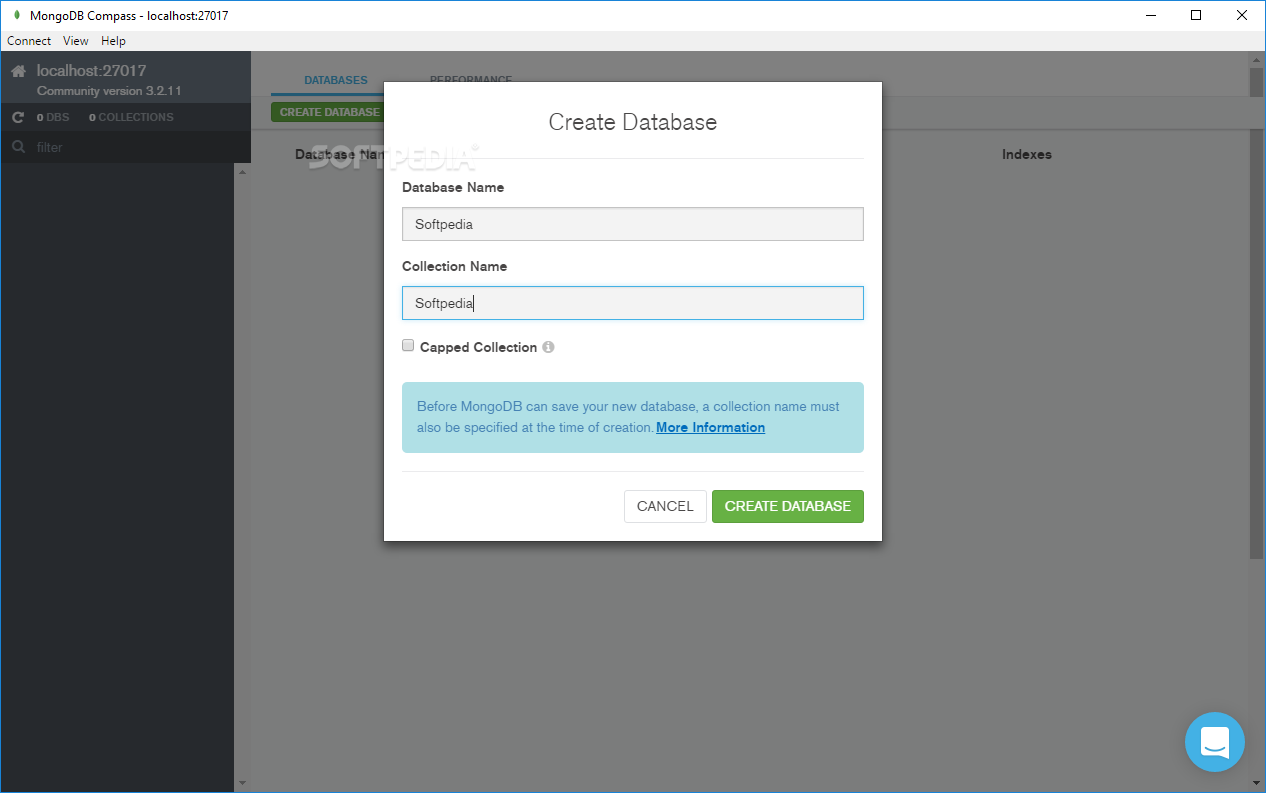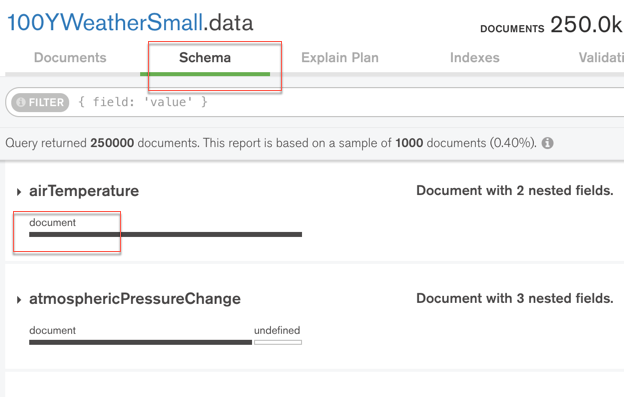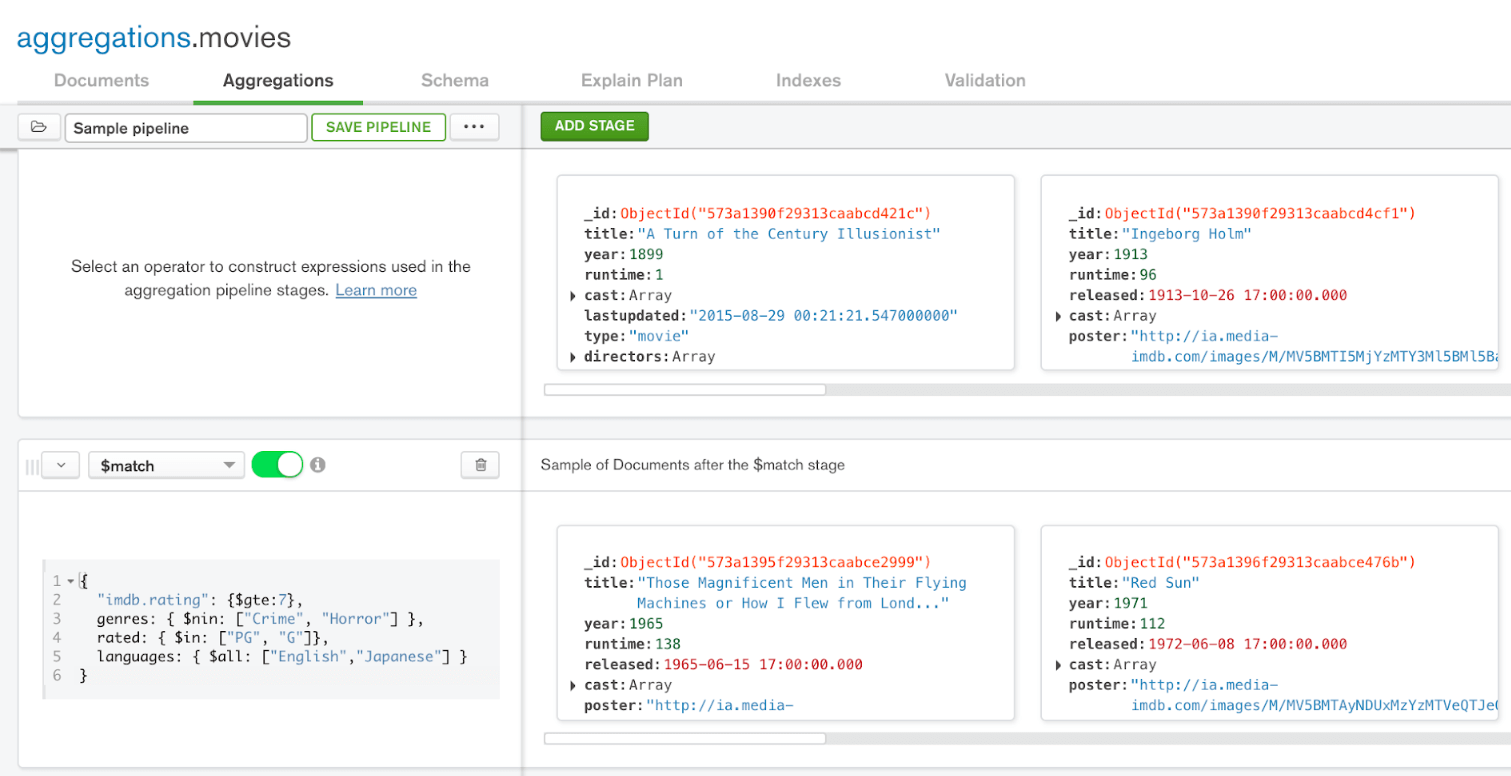
MONGODB COMPASS INSERT DOCUMENT DOWNLOAD
You can download the GUI Compass at the following link:

You can create and run a Docker container named ‘mongodb’ by running the following command: docker run -name mongodb -p 27017:27017 -d mongoĪfter you created the container, you can stop and start it using the following commands, respectively: docker stop mongodb docker start mongodbĪlso, you can always check the running containers, via the following: docker ps Obtain the MongoDB Compass Gui and Define a Database and a Collection įor convenience, we are also going to use the MongoDB Compass which is the official GUI for MongoDB. If you don’t have this, then you can easily achieve that by also using Docker and the official MongoDB Docker image to run a MongoDB container. It is presumed that you have an available and accessible running MongoDB instance. For that, it is necessary to create an example MongoDB database with a MongoDB collection. The purpose of this post is to demonstrate how we can apply some schema validation rules in a collection.

Respectively, a MongoDB collection is analogous to a table, and a MongoDB document can be considered as a table row.Ī MongoDB database can group together collections, a collection holds documents, and a document consists of a number of objects of key-value pairs, and even of other documents. Generally, we can think that a MongoDB database object is similar to an RDBMS schema containing tables, views, and other RDBMS objects. Document-based databases are either schema-less or they provide a certain level of flexibility defining schemas using schema validation rules.įor those who are coming from the RDBMS world, where a table structure is characterized by columns with strictly defined properties (type, size, etc.,), the ability to define schemas could be proved to be a quite useful option. It is a NoSQL database and it is based on JSON-like documents.

MongoDB is a very popular free and open source cross-platform document-oriented database. Photo by Jan Kahánek on Unsplash Short Intro


 0 kommentar(er)
0 kommentar(er)
